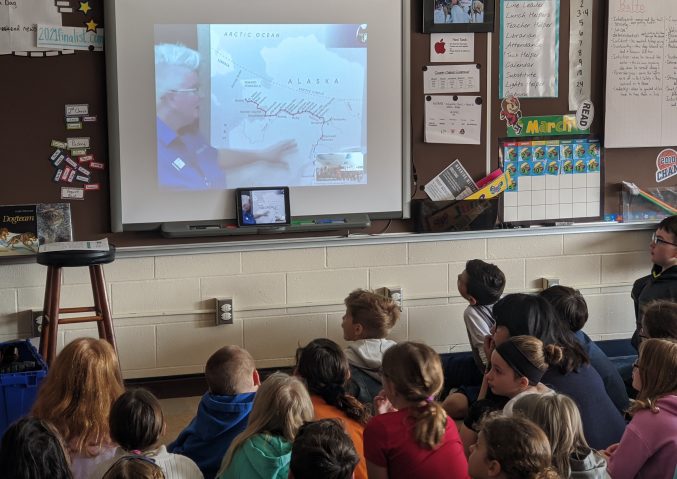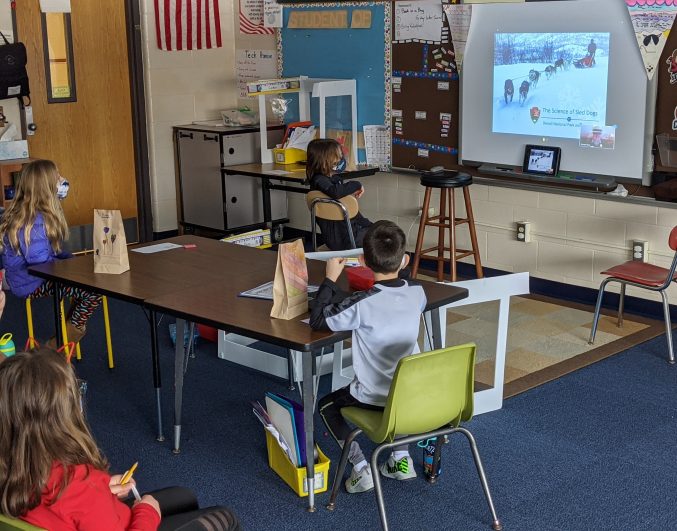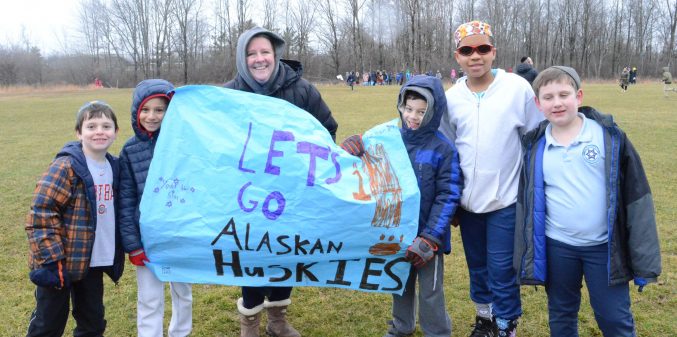As educators, there are plenty of things that have been difficult when it comes to teaching during a pandemic. However, I have also been able to find some silver linings. Due to the fact that I live and teach thousands of miles away from the site of the Iditarod, I have set up several virtual field trips for my students over the years to allow them to connect with some of the people and places at the center of the race. As our society has become more familiar with communication platforms such as Zoom, Google Meet, FaceTime and Duo over the past year, connecting virtually is a much more common practice for people both in and out of the classroom.
My students and I have thoroughly enjoyed these field trips over the years and I wanted to share some of these virtual opportunities with all of you! Each one helps teach students different subjects and area content, and gives them an opportunity to practice different skills. These interactive sessions have all helped contribute to the connections my students are able to make with the content.
The first virtual experience I want to share deals with the history of mushing and the Serum Run of 1925. The Cleveland Museum of Natural History (CMNH) offers a fantastic opportunity for the students to learn about the history of Nome, Leonhard Seppala and specifically Balto, who resides at the museum permanently! In non-Covid years, they send lots of materials to use during the presentation such as a musher’s snowsuit, boots, mitts, a dog harness and booties. There is a fee for this field trip unless you teach at a Title 1 school in Ohio. More information can be found here: https://www.cmnh.org/learn/school-programs

2019 Balto IVC showing some of the gear from CMNH

Lee from CMNH talking about the Serum Run in 2019
Check out the lesson information here from the CMNH: Balto Teacher Guide
Another field trip that I had heard a lot about, but never done myself until this year was “The Science of Sled Dogs” done through Denali National Park. In this experience, a park ranger discusses the adaptations of sled dogs and shows some great pictures to illustrate those examples. Denali National Park actually has their own functioning sled dog team to help assist park rangers, and they talk about these dogs in their presentation as well. This field trip is free, but fills up, so if you are interested, make sure to book them early! More information can be found here: https://www.nps.gov/teachers/classrooms/the-science-of-sled-dogs-distance-learning-program.htm

Denali N.P. Virtual Field Trip – The adaptations of sled dogs’ paws

Virtual Field Trip with Dawn from Denali National Park
One field trip that can be more challenging to schedule, but is very rewarding for the kids is connecting with a musher. Junior musher Julia Cross is one who is very willing to connect, and since she is a junior musher, might be a little more flexible with times. She does not charge a formal fee, but any donations would help defray upcoming race and dog care costs. Contact her at: jules.m.cross@hotmail.com

Julia Cross with leaders Earhardt and Ghost finishes 2nd in 2020. Photo Credit: Terrie Hanke
Years ago while reading the musher bios on the Iditarod website, I saw that Matthew Failor was also from Ohio and a fellow Ohio State alumni. I decided to reach out to him via email on his website link through the bio page, to see if he would be interested in talking to students in his home state about the race. I heard back a few weeks later, and have stayed in contact with him ever since! More recently, I have connected with other mushers through email, Facebook or other means, and they are usually very good about responding. I would suggest looking up a musher you’d like to connect with and giving it a shot!

Our 3rd Graders FacetTiming with Ohio native, Matthew Failor in 2019
This last field trip opportunity is geared toward the teachers! The Iditarod Historic Trail Alliance and other organizations in Alaska are having a series of webinars specifically for teachers to find out more about outdoor learning. There are 2 coming up in March (the first one is TOMORROW, March 2nd) that are specifically about the Iditarod Trail. I really recommend checking out all of the amazing programs that are offered here to better teach your students about this historic trail!
https://www.iditarod100.org/itrec-education-program.html

Photo Credit: Itrec Education Program Website
Teachers: Check out the above links for lesson plans and content standards. There are so many things available out there that catch the interest of students to help teach about the Iditarod, history of mushing and even the dogs themselves! I hope you look into one of these, or others with your classes!
Connecting with Classrooms:
Deena from Ohio sent me this lesson that is a version of the popular I-kid-arod activity. Check it out!

2019 Race!

2019 Race!
My name is Deena and I am a first grade general studies teacher. We do a 6 week unit on the Iditarod – a topic I very happily inherited from the previous first grade teacher. We learn about the mushers, the rules of the race, read lots of Iditarod books, and look at pictures and videos on the Iditarod website. At the end of our unit, we have our own quarter-mile Iditarod outdoors on our school’s sports fields. Before our race, the first graders are split into teams. They decide on a team name and logo, which all go on the bibs they make and wear in the race. They must also decide which teammate will be the musher (usually the smallest/lightest child) who will ride on the sled. We use plastic sleds that you can buy in most local stores in the Winter. Our race has 5 checkpoints, each with a problem to solve. One checkpoint is science, one is social studies, two are math, and one is usually a problem solving / engineering activity. That last one had to be changed for this year’s race! The teams have staggered start times so that only one team is at a checkpoint at a time, and the winning team is the one that completes the course in the fastest time.
With pandemic restrictions, we won’t be able to invite the rest of the elementary school out to cheer us on, or the first grade parents either. We’ll be having an “Alaska style” race instead, with quiet nature sounds just like the mushers have in the big Iditarod.


